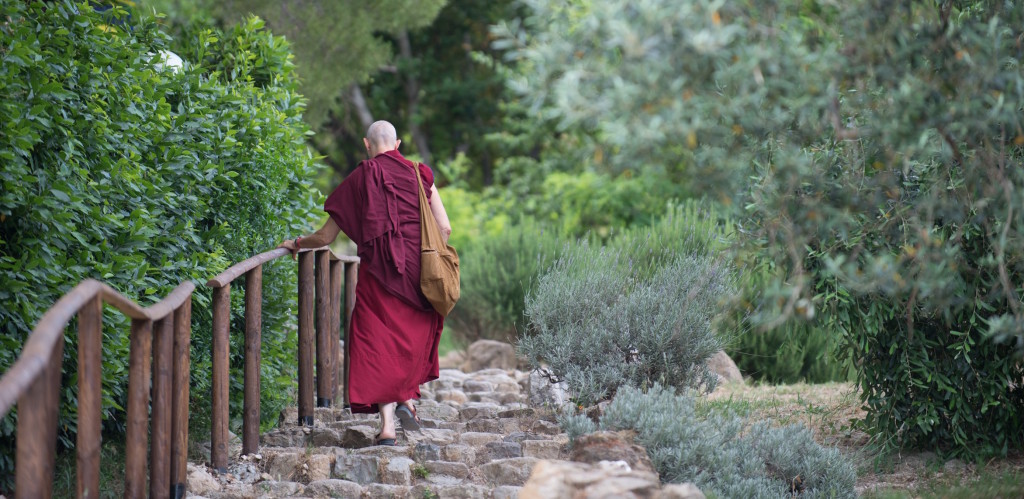Shantideva Bodhisattvacaryavatara

In recent years some people presented their wishs to make bequests in favor of the Institute Lama Tsong Khapa.
We thought it was right to prepare a document that summarized the answers to the most frequent doubts and reminded in general how the testament is a tool to freely dispose of oneself property when the time will come when we will leave our bodies.
Very often the last will is not respected because of the unawareness about the certainty of death and the uncertainty of the moment of death, so the results are trails of pain related to disagreements and even in forgetfulness to the people or the institutions that represented the values more shared in life. When talking about legacies it refers to an act by which anybody makes a donation,after their death, of movable and immovable property and / or benefits in favor of third parties
The word “testament” often conjures spells, counter-charms and fears, delaying his preparation to the indefinite future as if the time of death was at oneself discretion or as if to do or not do the testament itself would have the power to remove or approach the moment of death.
In fact the testament is the only tool that allows us, while alive, to choose who to entrust our goods for the time we will not be there anymore.
The testament is a guarantee due to the respect of the will of those who write it; It is often considered a typical act of those in possession of considerable wealth or those who want to divide them between people that sometimes do not match with the closest relatives that would be entitled by law to inherit.
People also tend to believe that in the testament one should put all of its assets when instead one can also specify the individual recipients of movable or immovable properties.
The testament is also the act by which one’s social sensitivity too can be demonstrated through a contribution to any organization or institution that express the values heartfelted.
To volontarily dispose of personal goods is an act of responsibility to our loved ones even after life. Prevents that certain goods will end up to people not directly or personally chosen and is an act of responsibility because it allows you to identify an administrator of your assets, eventually addressed to minors, ensuring its methods of administration.
The Testament also add value to the bonds. It allows a person to leave to his/her friends something of personal properties or some significant object and allows to protect a person own values, by allocating part of its assets to institutions that has been very close in life.
If you do not make a testament outside what is destined to the categories designated by law, all will go to the State.
For each of us the heritage is all that remains of the commitment of a lifetime. Within the law everyone can decide to whom and how to allocate their goods. The testament is the only act that allows us to establish in life to whom leave immovable properties, movable or money. It is not necessaryto dispose of all one’s assets. individual goods can also be destined with a specific destination.
The testament can be made by anyone who had reached the age of majority and is capable of consent. Even those who have physical problems or are unable to sign may make a testaent if witnessed by a notary, in the presence of two witnesses. There is also the possibility of modifying the testament subsequently if the conditions mutate, or due to particular events.
In essence the forms and procedures for drawing up a testament are two: the public testament and the holograph
The public will
It draws directly from the notary in the presence of the testator and two witnesses. The notary retains the act that is put away from any natural or human event. The notary will also certify the full capacity of discernment of the testator.
The holograph
It is the compile by hand of testamentary will. There can be no erasures and all words must be clear and legible.
- can not be drawn up using a typewriter or computer.
- can not be written by others even by dictation. The document shall bear the date and signature and full name and surname. It is advisable to
- hand-write three copies and then distribute them as reported:
- a copy filed with a notary in trust,
- a copy to someone you trust,
- a copy kept in a safe place.
Example of holograph
Formulas to be used in the testament may be as follows:
1) If you want to leave a legacy of movable or immovable property:
“… I leave it to the Foundation / Association (… Institute Lama Tsong Khapa) as related … (following brief description, if it comes to real estate, or an indication of the amount, whether it is money or securities), for the institutional purposes of ‘Institution”.
2) If you want to dominate heir (or co-heir) or the Institution above:
“. ..I erase All my previous testamentary disposition. I name my heir (or co-heir), the Association (Institute Lama Tsong Khapa) leaving to … all that belongs to me, for the Institution’s purposes “.
(Place and date) (full signature)
The testament must be written in his/her own hand by the testator
If you want to learn more and / or have you decided to do even a small bequest to the Institute, please write to lasciti@iltk.it or contact the Department through the secretariat of the Institute.
Thank you
At the end of the teachings of 2013, led by Venerable Lama Jampa Monlam at the Institute, the Teacher explained the importance of supporting a center of dharma as a place wherein are created causes and conditions for achieving inner peace and therefore universal peace.
We report this part of teaching in which, among other things, Lama Monlam tells how even in Tibet was customary to leave to the monasteries goods and assets to help them also after death, to the flourishing of the dharma and peace.
DONATE NOW!
You can donate also:
- WITH BANK TRANSFER
By Bank transfer or Bank RID
Fill the form - AT THE RECEPTION
At the Institute Office or at Reception

